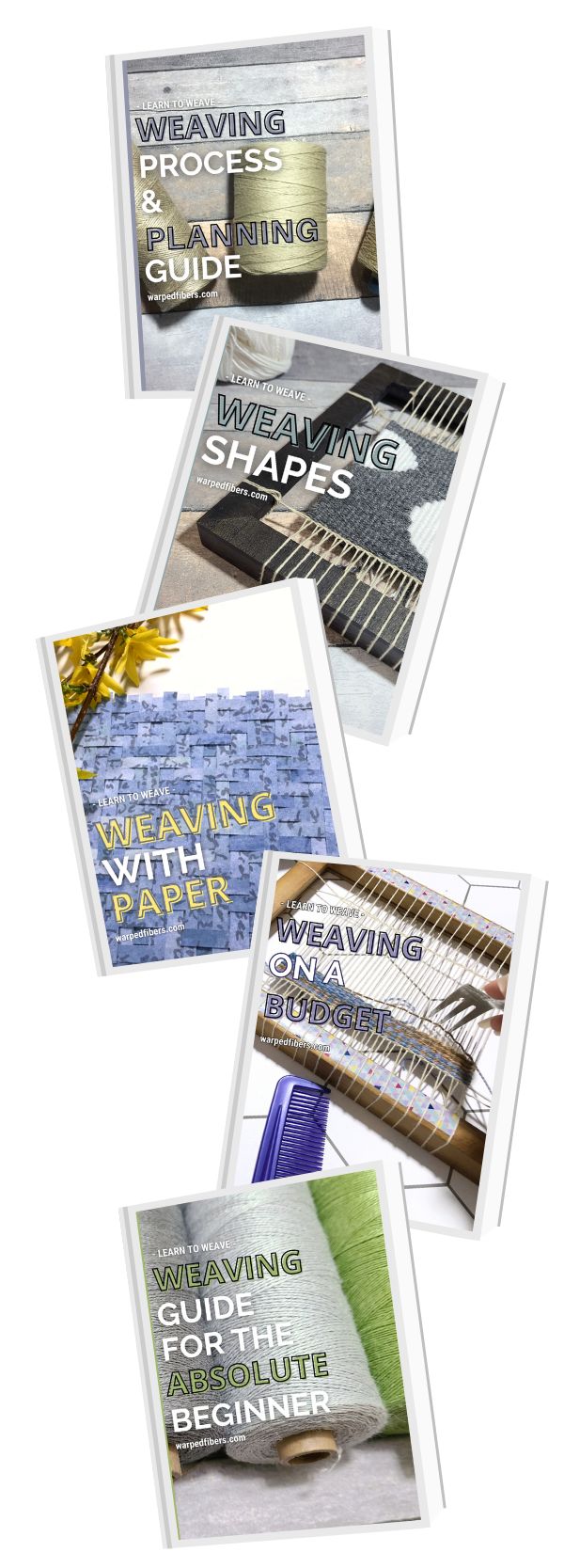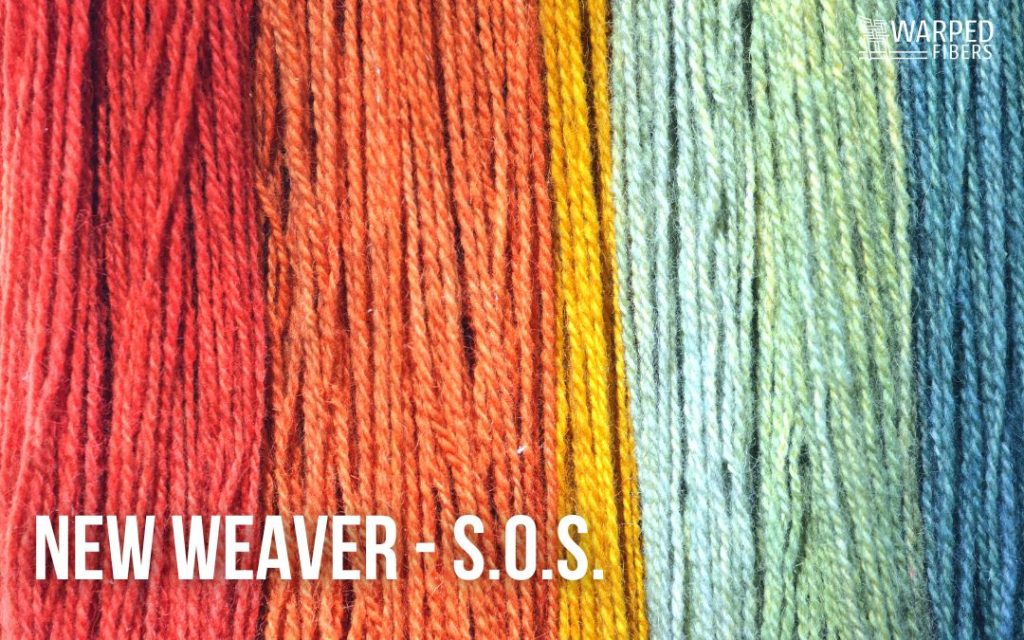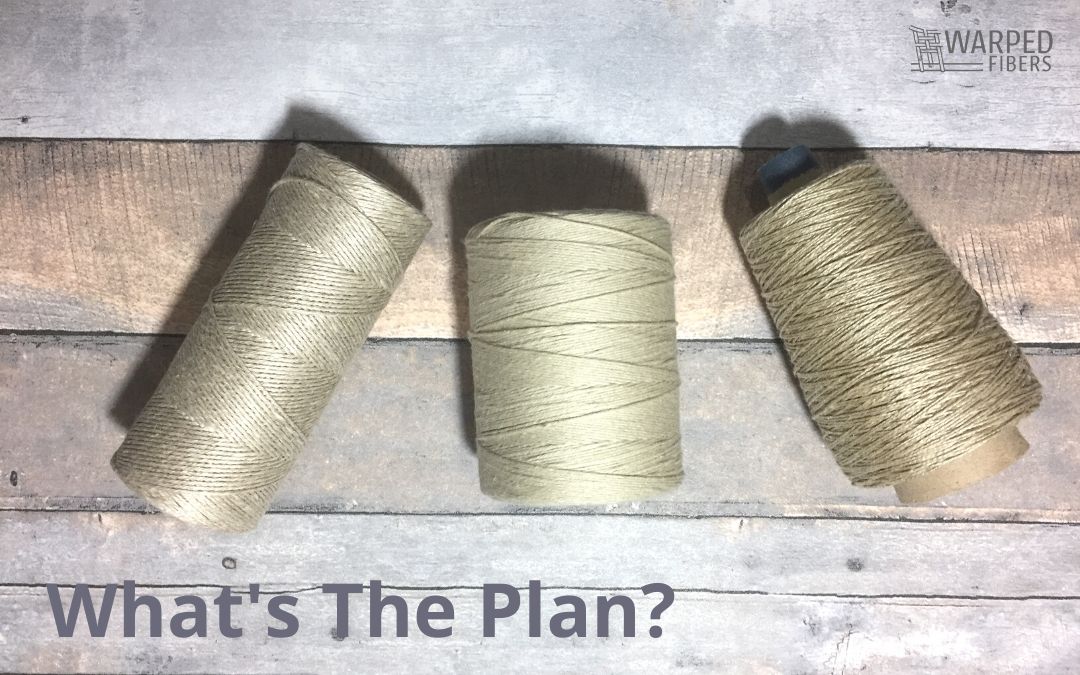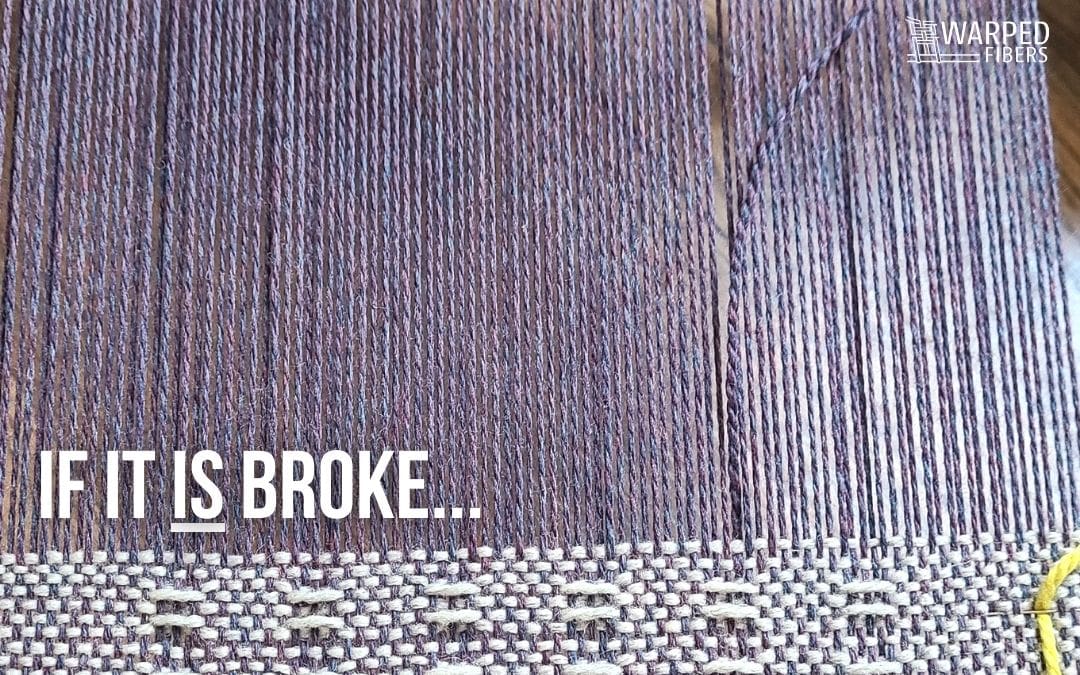When you think of animal fibers for yarn then you may first think of sheep’s wool since it is one of the most common options for protein yarns. Wool is a great yarn for many reasons, but if you are looking for something a bit softer then you might want to consider alpaca yarn instead!
Like all fibers there are pros and cons to what you choose to weave with.
Make sure to check out my other material spotlights too!
This page may contain affiliate links. If you purchase something through these links then I will receive a small commission – at no extra cost to you! Please read our DISCLAIMER for more info. Thanks for the support!
Jump To:
- Two breeds of Alpacas
- Alpaca history
- What it is best for
- When you may not want to weave with alpaca yarn
- Processing alpaca fiber
- References
Two breeds of Alpacas
Take a minute to think about alpacas. You are probably picturing a really fluffy animal with a teddy bear face. They are just so dang cute! This type of alpaca is called a huacaya (wa-cai-ya) and makes up about 95% of the world’s alpaca population. The other 5% of alpacas come from the Suri breed.
Huacaya alpacas have a crimped fleece that grows perpendicular to their bodies, this is what makes them appear so fluffy! The yarn will sometimes maintain some of this crimp even after processing. This could be a pro or a con depending on what you are looking for.
Suri alpacas, on the other hand, have curly fleece that grows down from their bodies and appears like dreadlocks. Any yarn made with this fleece will be smoother and straighter, but it is less common to find yarn made from suri alpaca fleece.
You can probably assume that any alpaca yarn that you come across will have been made from huacaya alpaca fleece.
Alpaca history
Aplacas belong to the camelid family that also includes llamas and their more wild cousins the vicunas and guanaco (and camels!) About 6000 years ago, alpacas were selectively bred from vicunas for longer fleece. While vicunas and the other members of the camelid family also produce fleece that can be made into fiber, it is the huacaya alpacas that produce the fiber that we most often buy and create with.
Alpaca are originally from Peru, but are now raised all over the world. Importation of alpaca to the United States started in 1985, but has since mostly stopped. Female alpaca usually only have 1 baby a year, so the alpaca population is slow growing.
Luckily for fiber artists, though, they produce quality fleece for their entire lives – about 20 years.
Today, Alpacas are raised primarily for their fiber, but have also been historically raised for food and fuel. Their fiber was also once reserved only for Incan royalty.
What it is best for
As we talked about in the beginning of this post, the most common protein fiber that is made into yarn is sheep’s wool. So it makes sense to compare the two types of fibers.
Alpaca fleece is actually structurally considered hair. Though calling it wool is common and acceptable. For the purpose of the post I will be referring to alpaca wool as alpaca and sheep’s wool as just wool.
Due to the hair structure of alpaca (much like wool) it felts really well. A quick reminder that felting is the process of matting hair with agitation, moisture, and heat. Felting occurs when the scales of the hairs intertwine.
If you are looking for a fiber that is especially warm and soft then alpaca is a great option – it is 3 times warmer than wool and incredibly moisture wicking. This makes it great for socks or any type of textile that may come in contact with sweat. It is also a great alternative to wool because it does not have lanolin which means that it is hypoallergenic . If you have allergy to wool, you should still be able to wear and work with alpaca!
There are now 2 ways to take it – either purchase the whole course at once for a discount or “create your own” course by purchasing just the parts you want! Either way, get 10% off for being a member of the Warped Community!
Fabrics created with alpaca fiber have a noticeable drape to them if constructed at the right warp sett, but can lean towards the heavier side compared to a similar wool yarn. If you are going for a great drape then lean towards the lower end of your EPI range when planning your projects.
A really great aspect of alpaca yarn is their natural color range from light and dark browns, reddish browns, black, to shades of grey. The animals themselves have such a rich set of natural colors that if you find yarn in any of these neutrals then you can probably guarantee that was the actual color of the animal and not dyed to be that way.
Alpaca yarn is also very strong, especially if it is a bit courser. When purchasing alpaca yarn it will usually either be listed as just alpaca or baby alpaca. This coarseness is found mostly in older animals. So if you are looking for a stronger yarn, then you will potentially want to steer away from the baby alpaca and towards yarn made from mature animals.
When you go to buy alpaca yarn you may find that a lot of times alpaca yarn is mixed with other fibers.
A common fiber mix is alpaca and wool, but you can also find it mixed with cotton, silk, or really any other fiber. These fiber mixes could make the yarn more or less expensive, but they can also add aspects to the yarn like better absorbency or a lighter overall fabric.
When you may not want to weave with alpaca yarn
While alpaca has many great qualities that make it a fantastic choice for a lot of different types of textiles, no fiber is perfect for everything.
As I talked about above, alpaca is moisture wicking. This makes a great sock or sweater, but not great for projects like towels. If you want a fiber that is really absorbent (perfect for towels) then you will want to choose cotton. Also, in my opinion you would be wasting your alpaca yarn on a towel.
Basically, consider what you are making and what types of qualities you need it to have.
Processing alpaca fiber
Alpaca fleece is shorn once a year in the spring. Don’t worry, it is a relatively fast process that does not hurt the animals. In fact, it helps to keep them cool in the summer months with enough time for their fleece to grow back and keep them warm in the winter.
After shearing, each fleece will be about 3 to 10 pounds depending on the size of the animal and sorted by quality. The back of the alpaca is usually shorn first in one large blanket also called a top. This is will be the softest fiber.
Due to not having lanolin in their fiber, alpaca is much easier to clean than wool. If you obtain raw fleece then you may need to clean out any particulates like dirt and vegetable matter (you can see bits of hay in the raw fleece I have above), but it will not need to be scoured! You can even get away with spinning alpaca without washing it first – just know it will be a bit dusty. Due to this dust, make sure to wash it before weaving with it!
Alpaca is such a beautiful and soft fiber to work with when you are weaving or creating. If you have not already woven with it then make sure to give it a try! You will not regret having an ultra soft scarf, blanket, or anything else to cuddle up with!
And to end he post something non-yarn but still alpaca related:
Random fun fact about Alpacas (and all members of the Camelidae species) they have oval red blood cells instead of round!
Let me know what you are weaving with your alpaca yarn!
References
https://sewport.com/fabrics-directory/alpaca-wool-fabric
https://www.wildhairalpacas.com/pages/1414/-whats-so-special-about-alpaca-fiber%3F
https://www.sciencedirect.com/topics/biochemistry-genetics-and-molecular-biology/alpaca
https://rockvillealpacafarm.com/?page_id=15
https://peacefulheartalpacas.com/2012/02/shearing-alpacas/
⇣ Love It? Share It! ⇣
You May Also Like

























Hi Nicole, is Alpaca yarn strong enough to use as warp on the rigid heddle loom? Thanks!
Warp strength ultimately depends on the individual yarn, but generally yes! Alpaca can be a really strong yarn and can work well as a warp.